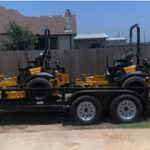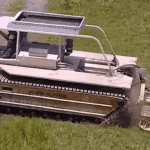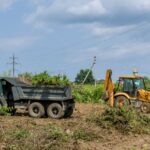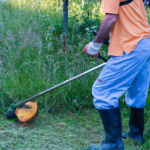In Texas, where the weather can turn fast and landscapes grow wild, keeping utility infrastructure safe and accessible is an ongoing responsibility. Power lines, pipelines, and energy installations cut through miles of rough terrain, often surrounded by fast-growing vegetation.
When brush, weeds, and overgrowth start encroaching on these utility corridors, safety risks follow. That’s where right-of-way clearing steps in.
What Is Right-of-Way Clearing?
Right-of-way clearing is the process of removing unwanted vegetation from the designated corridors where utility infrastructure is installed. These strips of land, often cutting through remote or rugged terrain, must remain free of obstruction to allow for safe operations and regular maintenance.
This work isn’t cosmetic. It directly affects how efficiently crews can reach sites, inspect systems, and prevent hazards. Without proper management, right-of-way areas can quickly become overgrown, making them a liability rather than a safeguard.
Why Overgrowth Poses a Serious Safety Threat
In dry Texas conditions, overgrowth can become instant fuel for wildfires. Tall grass, brush, or low-hanging limbs that touch power lines can spark outages or worse.
But fire isn’t the only risk. When growth blocks access to pipelines or energy infrastructure, it slows down emergency response and routine repairs. The delay can turn a small issue, like a minor leak or fault, into a much bigger problem that affects public safety and service reliability.
Reliable Access Is Non-Negotiable
Whether it’s a technician trying to reach a transformer, a spraying crew treating pipeline easements, or inspectors needing to assess buried lines, access matters. If roads, gates, or utility zones are blocked by vegetation, even the most skilled crews are stuck.
In real terms, that could mean:
- A solar farm is going offline longer than necessary after a storm.
- A utility crew is wasting hours navigating brush just to begin a routine inspection.
- Maintenance delays that increase repair costs and risk environmental damage.
Right-of-way clearing eliminates these obstacles. Keeping those corridors clear keeps infrastructure functioning the way it should.
The Work Behind the Clearing
Right-of-way clearing isn’t one-size-fits-all. Different terrains, utilities, and industries require different tools and techniques.
In remote or uneven areas, mechanical mowing and shredding knock down thick overgrowth. Bare-ground spraying keeps vegetation from growing back in key access paths. Selective spraying helps preserve desirable plants while targeting problematic species. Each method depends on what’s growing, where it’s growing, and how it affects the infrastructure nearby.
In Texas, vegetation can rebound fast after rainfall, so this work is rarely a one-time job. It takes seasonal planning, site-specific strategies, and ongoing management to stay ahead of the growth.
Responsible Vegetation Management
Clearing land doesn’t mean destroying it. A smart approach considers not just what needs to be removed, but what should be left alone. Selective spraying methods minimize impact on nearby plant life, reduce erosion, and help maintain the long-term health of the landscape.
The goal is to create safe, functional corridors without stripping the land or creating new problems. Done right, vegetation control supports sustainability as much as it supports safety.
If access is blocked, timelines stretch. If growth goes unchecked, risk increases. It’s far easier and smarter to plan and maintain than to rush and repair. Need a partner who understands Texas terrain and utility safety? Talk to our team at A&G Weed Control today and get the job done right.






0 Comments